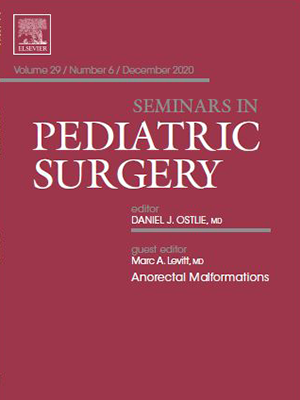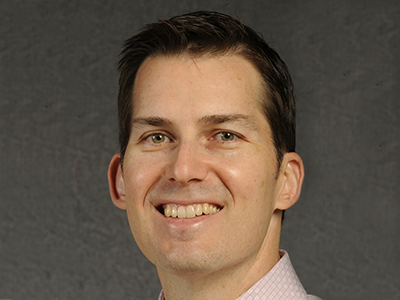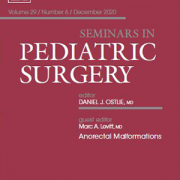
Marc Levitt, M.D., served as guest editor of a special December Seminars in Pediatric Surgery dedicated to the care and treatment of anorectal malformations.
By Marc Levitt, M.D., chief of the Division of Colorectal and Pelvic Reconstruction at Children’s National Hospital
I was honored to serve as the Guest Editor on the topic of “Anorectal Malformations” in the prestigious Seminars in Pediatric Surgery Volume 29, Issue 6, December 2020.
We had 64 contributing authors from 12 countries; Australia, Austria, Germany, Ghana, Italy, Israel, the Netherlands, Nigeria, Spain, South Africa, the United Kingdom and the United States, and 12 U.S. colorectal collaborating programs; Children’s National, Boston Children’s, Children’s Mercy, Children’s Wisconsin, C.S. Mott Children’s, Cincinnati Children’s, Nationwide Children’s, Nicklaus Children’s, Omaha Children’s, Primary Children’s, Seattle Children’s, and UC Davis Children’s.
There were eight authors from the Children’s National team; myself, Colorectal Director Andrea Badillo, M.D., Colorectal Program Manager Julie Choueiki, MSN, RN, Surgical Center Director Susan Callicott, Katie Worst, CPNP-AC, Grace Ma, M.D., Chief of Urology Hans Pohl, M.D., and Chief of Gynecology Veronica Gomez-Lobo, M.D.
The series of articles included in this collection illustrate new techniques and ideas that over time have made a dramatic and positive impact on the care and quality of life of children who suffer from colorectal problems. With an integrated approach to the care of this complex group of patients, great things can be achieved. As we endeavor to advance this field, we need to always remember that, as Alberto Pena, M.D., often said, “it is not the unanswered questions, but rather the unquestioned answers that one must pursue.”
In my own article on advances in the field, a 2021 update, I reproduce a piece by my daughter, Jess Levitt, who wrote something applicable to the care of children with colorectal problems, with the message that helping to create order is vital to improve a somewhat chaotic medical process traditionally available for the care of complex care. Her essay is reproduced here:
“A” must come before “B,” which must come before “C,” everybody knows that. But what if the Millercamp’s of this world did not have to sit next to the Millerchip’s when it comes to seating arrangements? Can Pat Zawatsky be called before Jack Aaronson when the teacher is taking attendance? Do those 26 letters that make up all the dialogue, signs, thoughts, books, and titles in the English-speaking departments of the world need their specific spots in line? Everyone can sing you the well-known jingle from A to Z, but not many people can tell you why the alphabet is the way it is. For almost as long as humans have had the English language, they have had the alphabet. The good ole ABCs.
However, the alphabet represents the human need for order and stability. I believe that the same thinking that went into the construct of time and even government went into the alphabet. Justifiably, lack of order leads to chaos. Knife-throwing, gun-shooting chaos, in the case of lack of governmental order. Listen to me when I tell you that there is absolutely no reason that the alphabet is arranged the way that it is. Moreover, the alphabet is simply a product of human nature and how it leads people to establish order for things that do not require it.
Now I know this sounds crazy but bear with me. Only if you really peel away the layers of the alphabet will you find the true weight it carries. People organized the letters of our speech into a specific order simply because there wasn’t already one. Questioning this order will enlighten you on the true meaning of it. Really dig deep into the meaning behind the social construct that is the alphabet. Short and sweet as it may be, the order of the ABCs is much less than meets the eye. There is no reason that “J” should fall before “K!” Understand this. Very important as order is, it is only a result of human nature. What’s next? X-rays become independent of Xylophones in children’s books of ABCs?
You know what the best part is? Zero chance you even noticed that each sentence in this essay is in alphabetical order.
Her literary contribution inspired me to do something similar. Take a look at the list of articles in this Seminars edition:
- Creating a collaborative program for the care of children with colorectal and pelvic problems. Alejandra Vilanova-Sánchez, Julie Choueiki, Caitlin A. Smith, Susan Callicot, Jason S. Frischer and Marc A. Levitt
- Optimal management of the newborn with an anorectal malformation and evaluation of their continence potential. Sebastian K. King, Wilfried Krois, Martin Lacher, Payam Saadai, Yaron Armon and Paola Midrio
- Lasting impact on children with an anorectal malformations with proper surgical preparation, respect for anatomic principles, and precise surgical management. Rebecca M. Rentea, Andrea T. Badillo, Stuart Hosie, Jonathan R. Sutcliffe and Belinda Dickie
- Long-term urologic and gynecologic follow-up and the importance of collaboration for patients with anorectal malformations. Clare Skerritt, Daniel G. Dajusta, Molly E. Fuchs, Hans Pohl, Veronica Gomez-Lobo and Geri Hewitt
- Assessing the previously repaired patient with an anorectal malformation who is not doing well. Victoria A. Lane, Juan Calisto, Ivo Deblaauw, Casey M. Calkins, Inbal Samuk and Jeffrey R. Avansino
- Bowel management for the treatment of fecal incontinence and constipation in patients with anorectal malformations. Onnalisa Nash, Sarah Zobell, Katherine Worst and Michael D. Rollins
- Organizing the care of a patient with a cloacal malformation: Key steps and decision making for pre-, intra-, and post-operative repair. Richard J. Wood, Carlos A. Reck-Burneo, Alejandra Vilanova-Sanchez and Marc A. Levitt
- Radiology of anorectal malformations: What does the surgeon need to know? Matthew Ralls, Benjamin P. Thompson, Brent Adler, Grace Ma, D. Gregory Bates, Steve Kraus and Marcus Jarboe
- Adjuncts to bowel management for fecal incontinence and constipation, the role of surgery; appendicostomy, cecostomy, neoappendicostomy, and colonic resection. Devin R. Halleran, Cornelius E.J. Sloots, Megan K. Fuller and Karen Diefenbach
- Treating pediatric colorectal patients in low and middle income settings: Creative adaptation to the resources available. Giulia Brisighelli, Victor Etwire, Taiwo Lawal, Marion Arnold and Chris Westgarth-Taylor
- Importance of education and the role of the patient and family in the care of anorectal malformations. Greg Ryan, Stephanie Vyrostek, Dalia Aminoff, Kristina Booth, Sarah Driesbach, Meghan Fisher, Julie Gerberick, Michel Haanen, Chelsea Mullins, Lori Parker and Nicole Schwarzer
- Ongoing care for the patient with an anorectal malfromation; transitioning to adulthood. Alessandra Gasior, Paola Midrio, Dalia Aminoff and Michael Stanton
- New and exciting advances in pediatric colorectal and pelvic reconstructive surgery – 2021 update. Marc A. Levitt
The first letter of each article forms an acrostic of the word “COLLABORATION” which is the secret sauce behind any success in the field of pediatric colorectal care.








